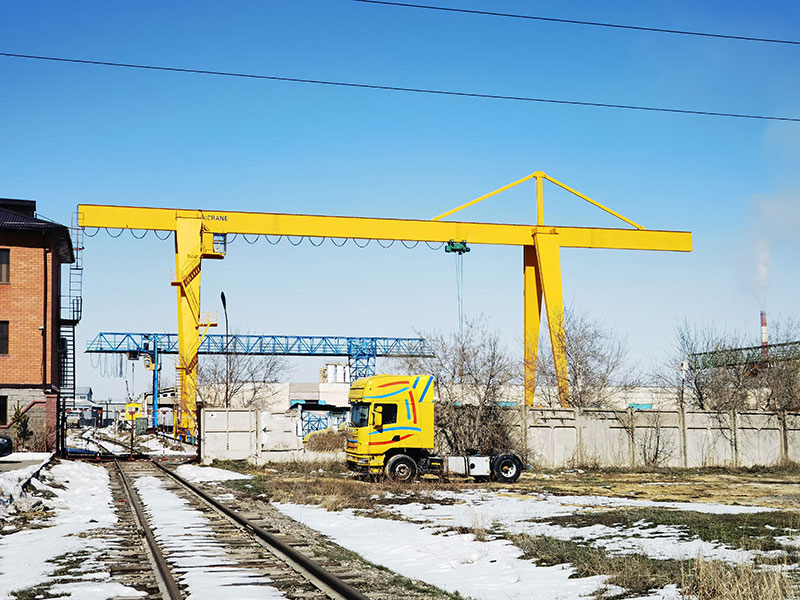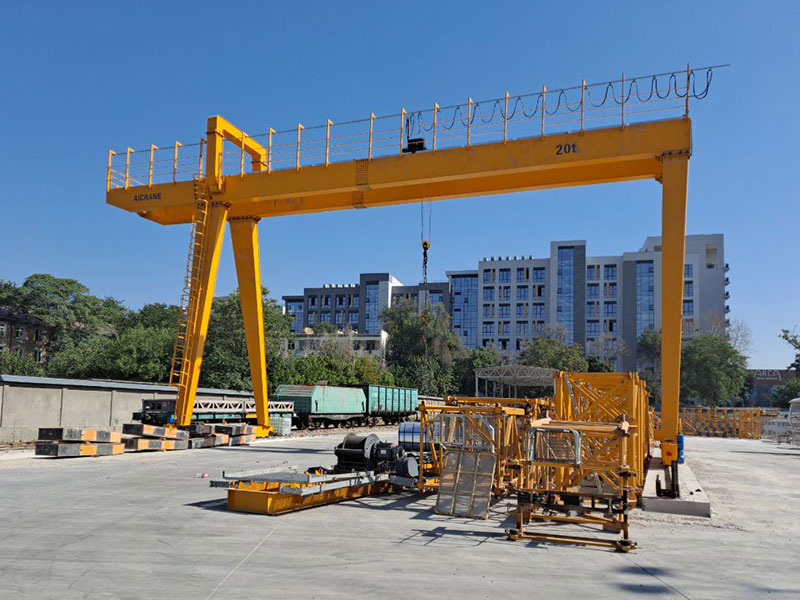When businesses invest in a 20 ton gantry crane, one of the most important specifications they look at is its capacity. The term “capacity” might seem straightforward, but in crane engineering, there are different definitions that users must clearly understand to avoid safety risks and optimize performance. Two of the most critical terms are rated capacity and actual lifting capacity. While they are related, they do not always mean the same thing. Misunderstanding the difference can lead to unsafe operations, unexpected downtime, or even damage to both crane and loads.
This article explores the difference between rated capacity and actual lifting capacity in the context of 20 ton gantry cranes, why the distinction matters, and how operators and decision-makers can make the best use of this knowledge.

Understanding Rated Capacity
Rated capacity is the maximum load a crane is designed to lift safely under standard working conditions, as specified by the manufacturer. For a 20 ton gantry crane, the rated capacity is 20 tons—but this number is not always straightforward.
Key points about rated capacity:
-
Defined by Design and Standards
The rated capacity is determined through careful engineering calculations, material strength testing, and compliance with international crane standards (such as ISO, FEM, or CMAA). For example, the crane girders, hoists, trolleys, and supporting legs are all sized to ensure that the crane can lift a maximum of 20 tons without risk of structural failure. -
Valid Under Ideal Conditions
The rated capacity assumes perfect conditions – such as the load being evenly distributed, the crane standing on level ground, and no excessive wind or side loading. -
Displayed on the Crane
By law and industry standards, every industrial gantry crane must have its rated capacity clearly displayed on a load plate. This is the value operators are trained never to exceed. -
Applies to the Hook, Not the System as a Whole
The rated capacity often refers to what the main hook can lift. However, if the crane uses auxiliary hooks or specialized attachments, the rated capacity for those components may differ.

Understanding Actual Lifting Capacity
While the rated capacity is a theoretical maximum, the actual lifting capacity is what the crane can safely handle under real working conditions.
In practice, a 20 ton gantry crane may not always be able to lift a full 20 tons because of various influencing factors.
Factors affecting actual lifting capacity include:
-
Load Position
If the load is lifted directly under the hoist at the center of the crane span, the crane can handle its rated 20 tons. However, if the load is closer to the cantilever or off-center, the effective capacity decreases. Structural stresses and tipping risks increase with load misplacement. -
Lifting Height and Radius
On some cranes, particularly cantilever or mobile gantry cranes, the actual lifting capacity reduces as the radius increases (similar to mobile cranes). Even fixed gantry cranes may experience reduced stability at certain lifting heights when paired with long cantilevers. -
Load Type
A compact, balanced load places less strain on the crane than a large, awkward, or shifting load. For example, lifting a 20 ton steel block is very different from lifting a 20 ton bundle of pipes that may roll or sway. -
Attachments and Rigging Gear
Slings, spreader bars, lifting beams, and other devices add weight. If a spreader bar weighs 2 tons, then the crane can only lift 18 tons of the actual payload. Operators must subtract the rigging equipment’s weight from the rated capacity to determine the actual lifting capacity. -
Environmental Conditions
Wind, uneven ground, vibrations, or operation on a sloped surface can reduce safe lifting capacity. For example, outdoor gantry cranes working in ports or construction sites often derate their lifting ability during high winds. -
Crane Wear and Maintenance Condition
Over time, wear and tear on hoists, ropes, and mechanical systems can reduce the effective safe lifting capacity of a crane. A well-maintained crane can operate closer to rated capacity, while a poorly maintained crane must often be derated.
Key Differences Between Rated Capacity and Actual Lifting Capacity
| Aspect | Rated Capacity | Actual Lifting Capacity |
|---|---|---|
| Definition | The maximum load set by the manufacturer under ideal conditions. | The load the crane can safely lift in real working conditions. |
| Example for 20 Ton Gantry Crane | 20 tons (as per specification). | May be less than 20 tons depending on load position, rigging, or conditions. |
| Control | Fixed number based on design. | Variable and situation-dependent. |
| Influencing Factors | Design, standards, materials. | Load distribution, rigging weight, environment, crane wear. |
| Safety Role | Absolute limit not to exceed. | Practical working guideline for safe operations. |
Why the Difference Matters
-
Safety of Workers and Equipment
Exceeding the actual lifting capacity – even if still below the rated capacity – can cause accidents. Misjudging this difference can lead to dropped loads, structural damage, or even crane collapse. -
Compliance and Regulations
Many safety regulations require operators to account for both rated and actual lifting capacities. For example, load charts and safety manuals often explain how capacities change with rigging or environmental conditions. -
Cost Efficiency
If a 20 ton gantry crane regularly handles loads close to 20 tons plus heavy rigging, its effective lifting capacity may be insufficient. This could require additional cranes, downtime, or operational inefficiencies. Understanding the distinction helps companies choose the right crane and accessories from the beginning. -
Crane Longevity
Consistently pushing a crane to its rated capacity shortens its lifespan. By working within actual lifting capacity limits, operators reduce wear and prolong the crane’s service life.
Best Practices for Managing Capacity Safely
-
Always Account for Rigging Gear
Deduct the weight of slings, spreaders, and hooks from the rated capacity. -
Use Load Monitoring Systems
Modern 20 ton single or double girder gantry cranes can be equipped with load cells and sensors that display the real-time load, helping operators stay within safe limits. -
Train Operators Properly
Operators should be trained not only on rated capacity but also on how to calculate actual lifting capacity under specific conditions. -
Perform Regular Maintenance
Inspections of hoists, ropes, brakes, and structural parts ensure the crane can perform near its rated capacity safely. -
Refer to Manufacturer’s Load Charts
Some cranes come with detailed load charts showing derating conditions. Following these charts ensures safety.
Conclusion
In the case of a 20 ton gantry crane, the rated capacity is the maximum theoretical load defined by the manufacturer, while the actual lifting capacity is the real safe working load under current operating conditions. Understanding the difference between these two values is essential for safe and efficient crane operations.
For buyers, recognizing this distinction helps in selecting the right crane and avoiding under-capacity situations. For operators, it ensures that every lift is performed safely, within limits that protect both people and equipment.
In short, while a 20 ton gantry crane may be rated for 20 tons, the actual lifting capacity is often less – and recognizing that difference can make the crucial distinction between a safe lift and a dangerous one.